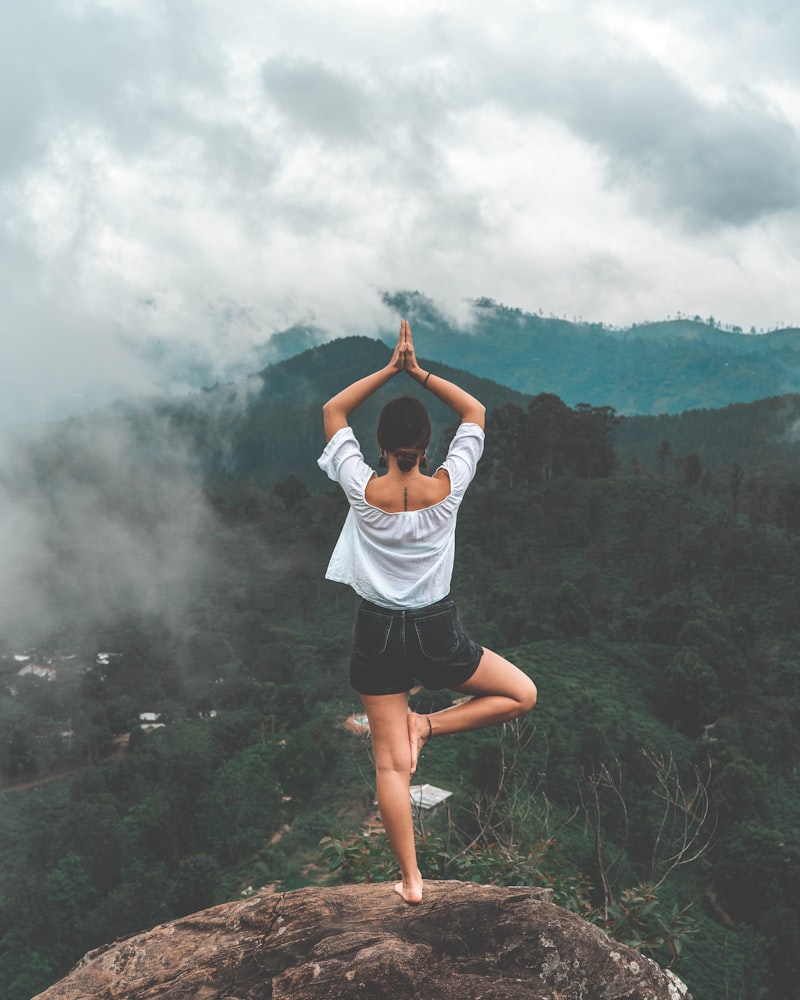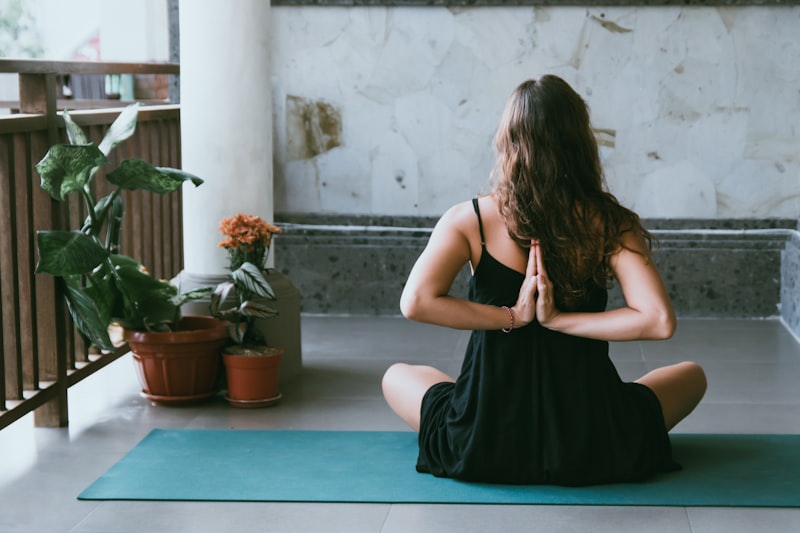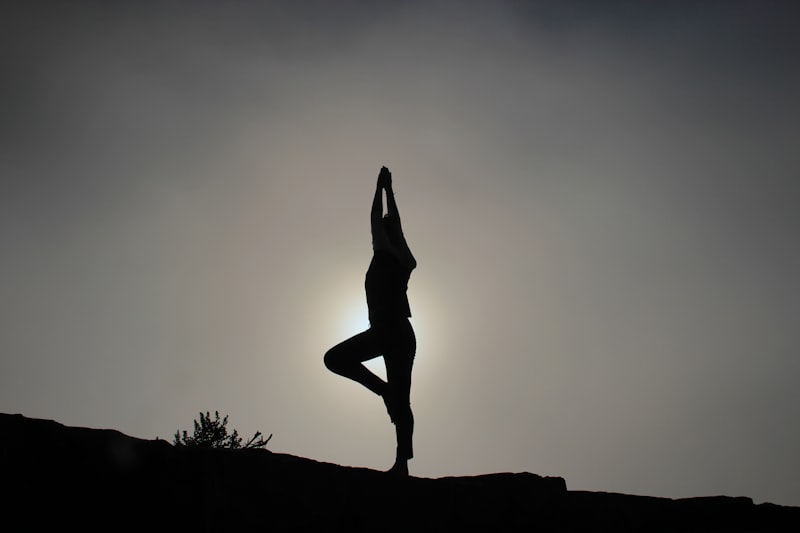Imagine your breath as the conductor of an orchestra, guiding each movement and creating harmony within. Just as a skilled conductor shapes music’s flow, pranayama techniques shape the flow of prana, or life force energy, throughout the body. This ancient practice teaches us to breathe consciously, using techniques like deep belly breathing or alternate nostril breathing to calm the mind and energize the body.
The benefits of conscious breathing extend far beyond the yoga mat. By slowing down and deepening our breath, we activate the parasympathetic nervous system, promoting relaxation and reducing stress. This not only improves our physical well-being by lowering blood pressure and enhancing lung function but also enhances mental clarity and emotional resilience.
Incorporating pranayama into your daily routine can transform how you experience life. Just as a gentle breeze can clear away the clouds, conscious breathing can clear the mind of clutter and negativity. It’s a practice that invites us to connect with our inner selves, fostering self-awareness and mindfulness.
So, the next time you roll out your yoga mat, remember the profound role of breathing in your practice. Explore different pranayama techniques, allowing each breath to remind you of the power within. As you breathe consciously, you’re not just oxygenating your body; you’re embracing a journey of self-discovery and inner peace.
Harnessing Inner Calm: How Yogic Breathing Enhances Mind-Body Balance
Yogic breathing, also known as pranayama, goes beyond simple inhalation and exhalation. It involves deliberate control of breath to calm the mind and relax the body. By focusing on the breath’s rhythm and depth, practitioners can alleviate stress and promote relaxation effectively.
One of the key techniques in yogic breathing is diaphragmatic breathing, where the breath originates from the diaphragm rather than shallow chest breathing. This technique enhances oxygen flow throughout the body, promoting a sense of calmness and reducing anxiety levels.
Moreover, pranayama techniques such as Nadi Shodhana (alternate nostril breathing) help balance the body’s energy channels, known as nadis. This practice not only harmonizes the nervous system but also clears the mind of clutter, fostering mental clarity and focus.
The beauty of yogic breathing lies in its accessibility and versatility. Whether practiced in a serene yoga studio or integrated into daily routines, these techniques offer immediate relief from the hustle and bustle of daily life. They empower individuals to manage stress proactively and cultivate a deeper connection between mind and body.
Unlocking Serenity: The Science Behind Breathing Techniques in Yoga
Breathing techniques in yoga hold a profound key to unlocking serenity and enhancing the mind-body connection. At its core, yoga emphasizes the power of breath as a fundamental tool for calming the mind and relaxing the body. This ancient practice harnesses the science behind breathing to achieve profound mental and physical benefits.

Central to yoga is the concept of pranayama, which translates to the control of life force through breath. Practitioners of yoga learn various pranayama techniques to influence their physical and mental states consciously. For instance, deep diaphragmatic breathing, known as “belly breathing,” stimulates the parasympathetic nervous system, triggering relaxation responses that counteract stress hormones like cortisol.
Moreover, rhythmic breathing patterns in yoga, such as the 4-7-8 technique, synchronize breath with movement to enhance focus and mindfulness. These techniques not only oxygenate the body but also promote a state of mental clarity and emotional balance. Imagine each breath as a wave, gently guiding the mind into a tranquil state, washing away tension and fostering inner peace.
Scientific studies validate the efficacy of yoga breathing techniques in reducing anxiety, improving lung function, and lowering blood pressure. The slow, deliberate pace of pranayama allows for greater oxygen absorption and carbon dioxide elimination, optimizing respiratory efficiency. This process enhances overall well-being by promoting relaxation and reducing the physiological markers of stress.

In essence, yoga breathing is more than just inhaling and exhaling—it’s a gateway to inner harmony and vitality. By mastering these techniques, individuals can cultivate a deeper connection with their bodies and minds, tapping into a wellspring of calmness amidst life’s daily challenges. Whether practiced in solitude or in a group setting, the transformative power of yoga breathing continues to inspire and uplift countless individuals worldwide.
Unlock the serenity within yourself through the art and science of yoga breathing. Embrace each breath as a gentle reminder of your innate capacity for peace and balance, guiding you towards a more harmonious existence.
Breath as Medicine: Exploring the Healing Powers of Yoga Breathing
Imagine your breath as a rhythmic wave, gently ebbing and flowing through the shores of your consciousness. Much like the ocean tide, it has the power to cleanse and rejuvenate. Through pranayama, yoga enthusiasts explore various breathing exercises designed to calm the mind, reduce stress, and enhance vitality.
One such technique, “Nadi Shodhana” or alternate nostril breathing, exemplifies the transformative effects of intentional breathing. By alternating the flow of breath through each nostril, practitioners balance the left and right hemispheres of the brain, fostering mental clarity and emotional stability. This simple yet profound practice not only enhances cognitive function but also promotes a sense of inner harmony.
Furthermore, “Kapalabhati” or skull shining breath, exemplifies the energizing properties of pranayama. Through rapid, forceful exhalations followed by passive inhalations, Kapalabhati oxygenates the body, clears the mind, and invigorates the spirit. Like stoking a fire, this technique ignites vitality within, awakening dormant energies and promoting overall well-being.
In essence, yoga breathing transcends mere physical exercise; it becomes a pathway to holistic health and spiritual growth. Each breath drawn consciously carries the potential to heal, uplift, and transform. As you explore the realms of pranayama, consider the profound wisdom encapsulated in the simple act of breathing. Embrace the healing powers within your breath, and embark on a journey towards inner peace and vitality.
From Stress to Stillness: How Yogic Breathwork Reduces Anxiety
In today’s fast-paced world, stress and anxiety have become prevalent issues affecting many individuals. One effective method gaining recognition for its ability to combat these challenges is yogic breathwork. This ancient practice, rooted in mindfulness and conscious breathing techniques, offers a profound journey from stress to stillness.
Yogic breathwork, often referred to as pranayama in yoga philosophy, emphasizes the connection between breath and mind. By practicing specific breathing exercises, individuals can regulate their breath patterns, calming the nervous system and reducing the physiological markers of stress. This intentional focus on breath allows practitioners to cultivate a sense of inner peace and emotional balance.
One of the key techniques used in yogic breathwork is diaphragmatic breathing, where the breath originates from the abdomen rather than shallow chest breathing. This deep breathing technique helps increase oxygen flow to the brain and body, promoting relaxation and clarity of mind. As individuals engage in this practice regularly, they develop greater awareness of their breath and its direct influence on their mental state.
Moreover, yogic breathwork incorporates mindfulness principles, encouraging individuals to stay present and observe their thoughts without judgment. This practice fosters resilience against anxious feelings by teaching practitioners to acknowledge their emotions while maintaining a grounded, centered presence.
Imagine the breath as a tide gently guiding you back to shore amidst life’s turbulent waves. Through consistent practice, yogic breathwork equips individuals with a powerful tool to navigate stress and anxiety, promoting a state of stillness and inner tranquility. As the breath becomes an anchor in moments of distress, practitioners discover profound relief from the grips of anxiety, paving the way for a more balanced and harmonious life.

Yogic breathwork stands as a beacon of hope for those seeking holistic approaches to manage anxiety. By harnessing the transformative power of breath, individuals embark on a journey that transcends stress, leading them towards a state of profound stillness and emotional well-being.
The Art of Pranayama: Ancient Breathing Techniques for Modern Wellness
Pranayama, which translates to ‘extension of the prana’ or life force, encompasses various breathing exercises designed to bring balance to the body and mind. Unlike regular breathing, where we often take shallow breaths, pranayama teaches us to breathe consciously and deeply, tapping into the full capacity of our lungs.
One of the foundational techniques is ‘Nadi Shodhana’ or alternate nostril breathing. This practice involves gently closing off one nostril while inhaling through the other, then switching nostrils during exhale. It’s like clearing the pathways of your breath, allowing energy (prana) to flow smoothly throughout your body. This rhythmic breathing not only calms the mind but also balances the left and right hemispheres of the brain, promoting clarity and focus.
Another powerful pranayama technique is ‘Kapalabhati’ or skull shining breath. This involves rapid, forceful exhalations followed by passive inhalations. It’s like giving your mind a refreshing cleanse, boosting oxygen supply, and releasing toxins. This practice invigorates the entire body, increases lung capacity, and enhances mental alertness.
For those seeking relaxation, ‘Sitali’ or cooling breath is ideal. By curling the sides of the tongue and inhaling through the mouth, you draw in air that feels cool and refreshing. It’s akin to sipping on a cool drink on a hot day, soothing your nervous system, reducing anxiety, and bringing a sense of tranquility.
In today’s fast-paced world, where stress and distractions abound, the ancient wisdom of pranayama offers a sanctuary of peace and renewal. Whether you’re a seasoned yogi or a beginner, integrating these breathing techniques into your daily routine can transform how you experience life—bringing balance, clarity, and a deeper connection to your inner self.
Breath Control: Enhancing Physical Performance Through Yoga
In yoga, the art of breath control is known as pranayama. This ancient practice teaches us to harness the power of our breath to optimize physical and mental well-being. By mastering different breathing techniques, yogis can significantly improve their endurance, flexibility, and overall performance.
One of the fundamental techniques is diaphragmatic breathing, often referred to as belly breathing. Instead of shallow chest breaths, this technique involves deep inhalations that expand the belly, allowing for maximum oxygen intake. This not only increases lung capacity but also calms the mind, reducing stress and anxiety levels.
Another powerful technique is ujjayi breath, commonly used in Vinyasa and Ashtanga yoga practices. Often described as “ocean breath,” ujjayi involves gently constricting the throat to create a soft, whispering sound during both inhalation and exhalation. This rhythmic breathing not only helps to synchronize movement with breath but also generates internal heat, enhancing detoxification and endurance.
For those seeking to boost stamina and focus, kapalabhati or “skull-shining breath” is an excellent choice. This rapid, forceful exhalation followed by a passive inhalation helps to clear the nasal passages, invigorate the mind, and increase energy levels.
Incorporating breath control into your yoga practice isn’t just about physical benefits; it’s about achieving a deeper connection between mind and body. As you cultivate awareness of your breath, you naturally become more present in each pose, refining your alignment and embracing the grace of movement.
Mindful Breathing: Cultivating Mental Clarity with Yoga Practices
Mindful breathing is more than just inhaling and exhaling; it’s a powerful tool for achieving mental clarity and enhancing overall well-being through yoga practices. Imagine your mind as a turbulent ocean, and each breath as a gentle wave that gradually calms the waters. This analogy captures the essence of how mindfulness can transform our mental state.
In yoga, mindful breathing techniques are foundational. They involve focusing on the breath, observing its natural rhythm, and gently guiding it to deepen relaxation and awareness. By directing attention to each inhalation and exhalation, practitioners cultivate a state of present-moment awareness. This practice not only reduces stress but also sharpens concentration and promotes emotional balance.
The beauty of mindful breathing lies in its simplicity. It can be practiced anywhere, at any time, making it accessible for everyone seeking mental clarity amidst life’s daily challenges. Whether you’re at home, work, or outdoors, a few minutes of focused breathing can make a profound difference in your day.
Research supports the effectiveness of mindful breathing in enhancing cognitive function and emotional resilience. By oxygenating the brain and reducing cortisol levels, this practice boosts mental clarity and sharpens focus. It’s like giving your mind a refreshing spa day, where each breath rejuvenates your thoughts and clears away mental fog.
As you integrate mindful breathing into your yoga routine, observe how it transforms your practice from physical exercise to a holistic mind-body experience. Each inhale fills you with calmness, while each exhale releases tension and distractions. The simplicity of this practice belies its profound impact on mental well-being, making it a cornerstone of modern wellness practices.
Mindful breathing through yoga offers a pathway to mental clarity that is both accessible and transformative. Embrace this practice as a daily ritual, and watch how it enhances your ability to navigate life’s challenges with a clear and focused mind.
Frequently Asked Questions
What are the different breathing techniques used in yoga?
Explore various breathing techniques in yoga, such as Ujjayi, Kapalabhati, and Nadi Shodhana, each offering unique benefits like relaxation, energization, and mental clarity. These techniques enhance mindfulness and support overall well-being through controlled breathwork.
What is the importance of breathing in yoga practice?
Discover the crucial role of proper breathing techniques in yoga. Learn how focused breathing enhances relaxation, improves oxygen flow, and deepens mindfulness during practice.
How can yoga breathing techniques improve overall health?
Learn how yoga breathing techniques enhance overall health by reducing stress, improving lung capacity, and promoting relaxation. Discover their benefits for mental clarity and emotional well-being.
How does proper breathing enhance yoga benefits?
Proper breathing techniques significantly enhance the benefits of yoga practice by promoting relaxation, increasing mindfulness, and improving oxygen flow throughout the body. Consistent use of controlled breathing techniques helps regulate heart rate, reduce stress, and deepen the mind-body connection, enhancing overall physical and mental well-being during yoga sessions.
Why is mindful breathing essential in yoga?
Mindful breathing is crucial in yoga as it enhances focus, connects the mind and body, reduces stress, and promotes relaxation. This technique fosters present-moment awareness, supporting overall well-being and deeper meditation practice.


